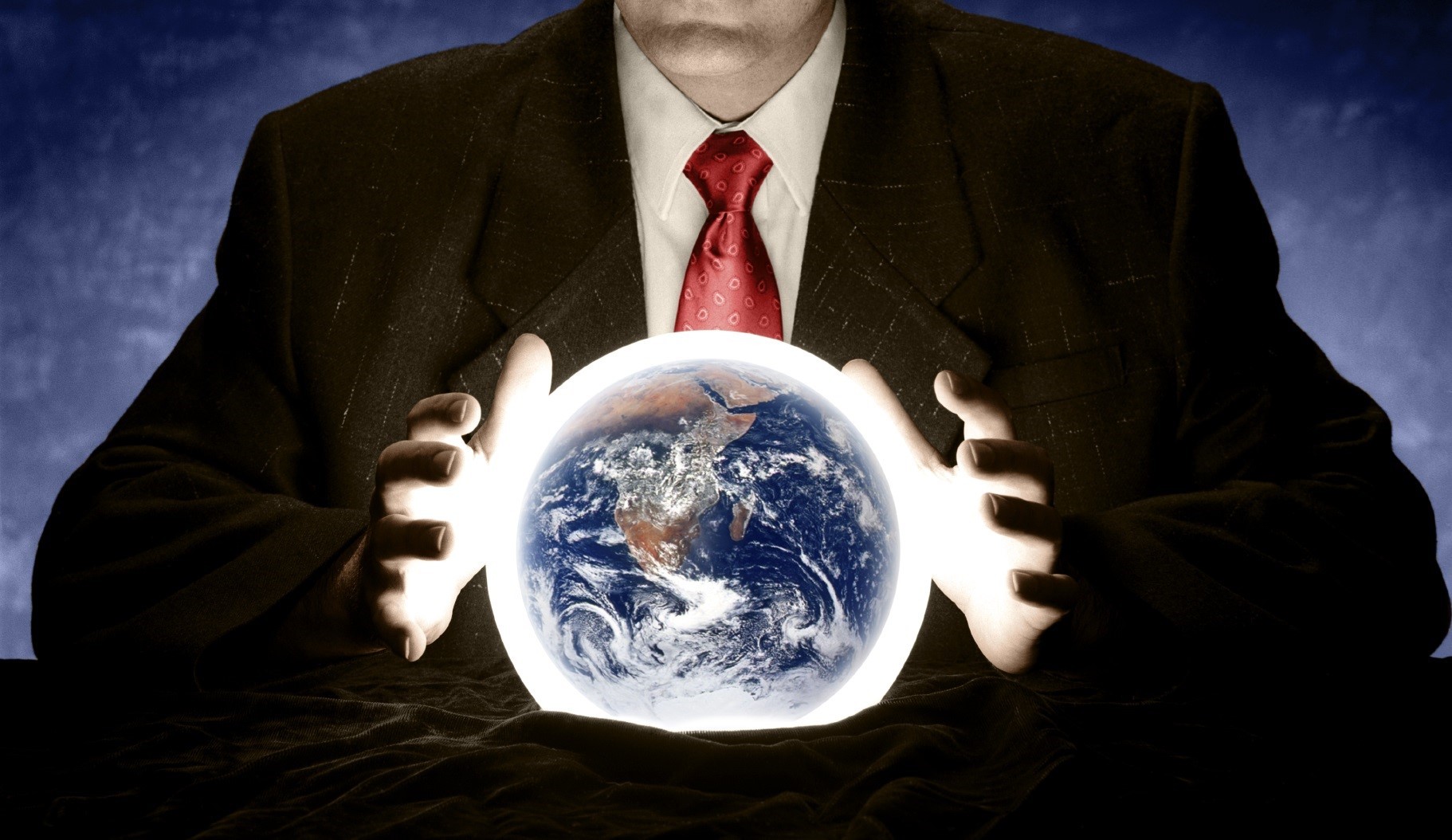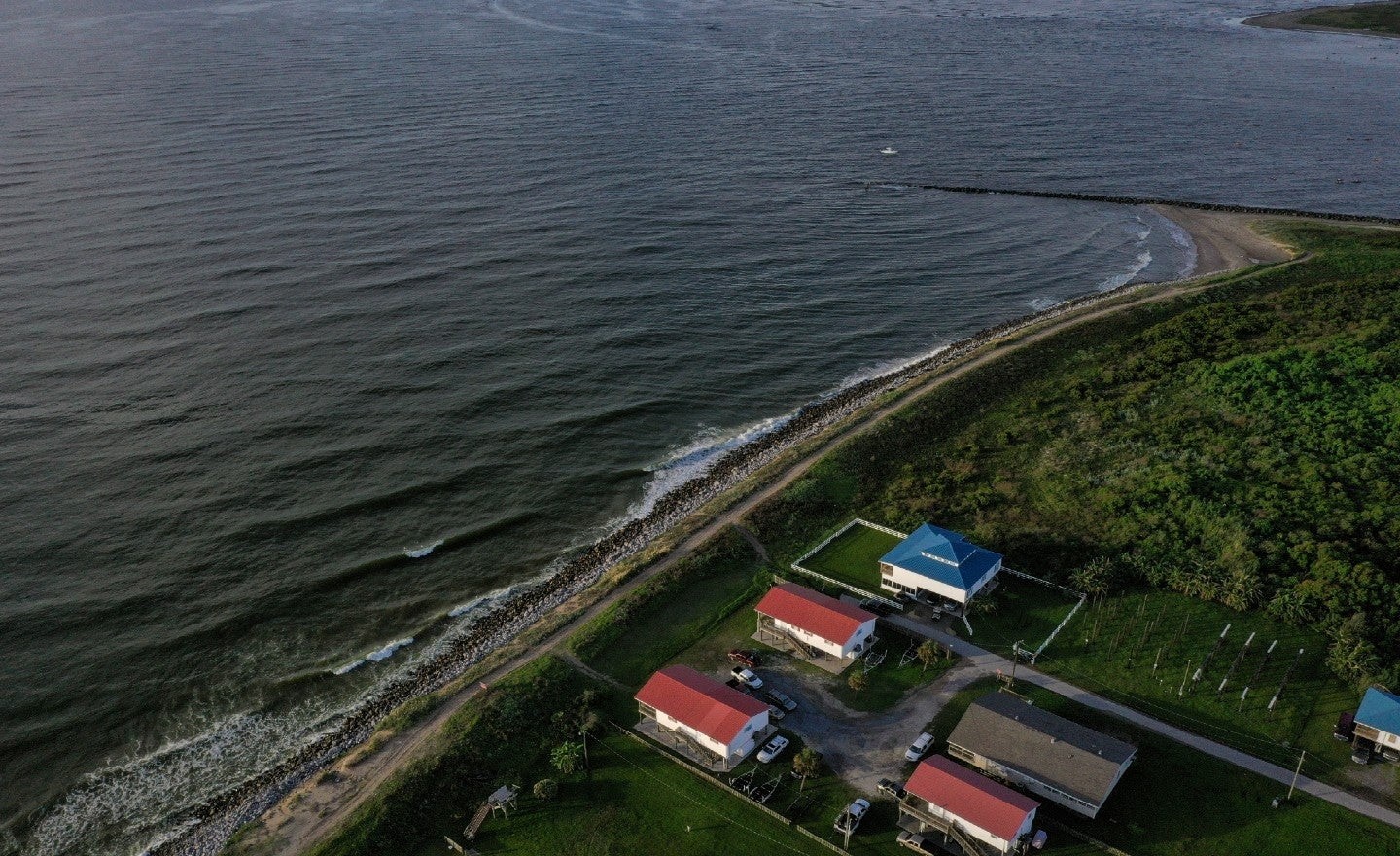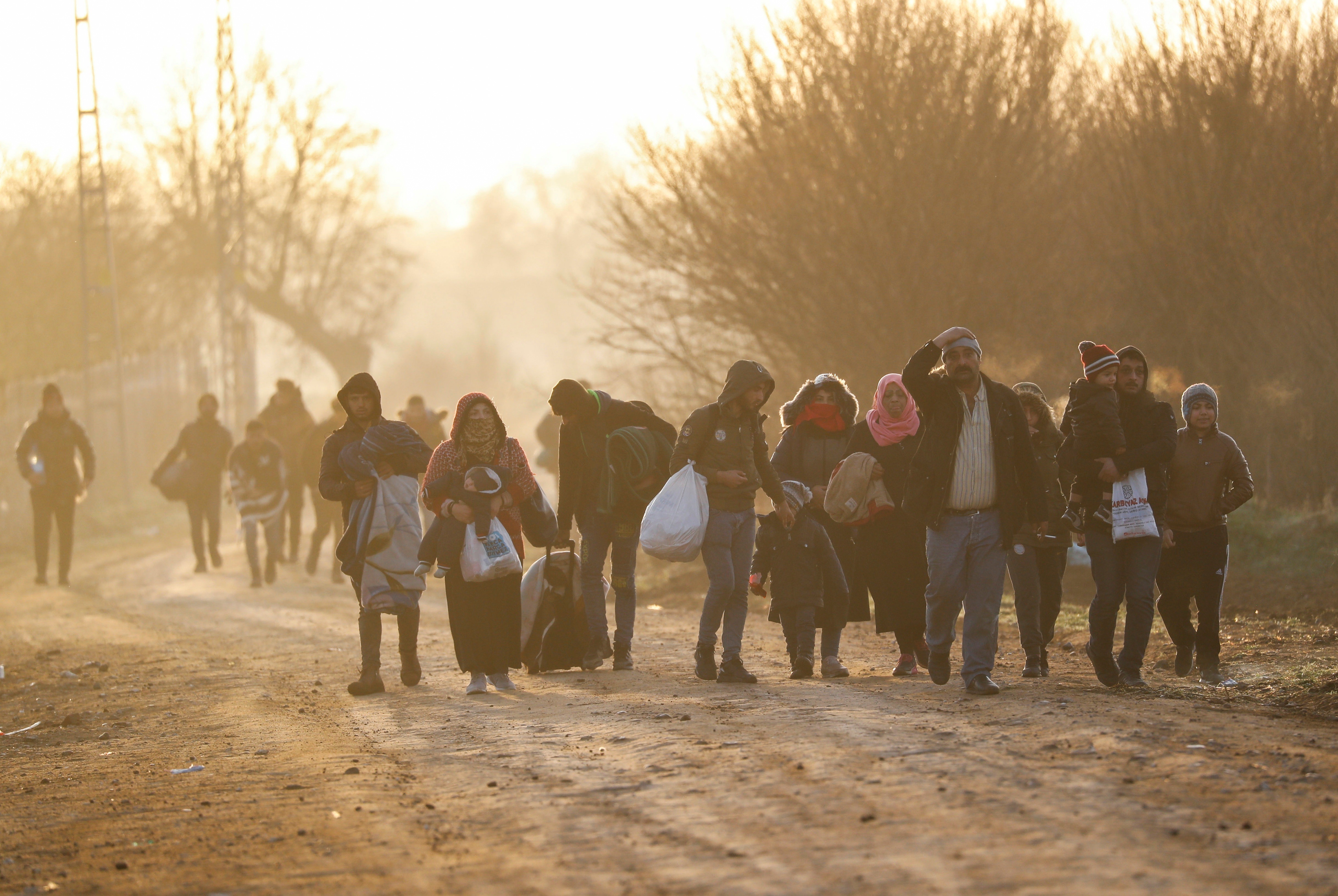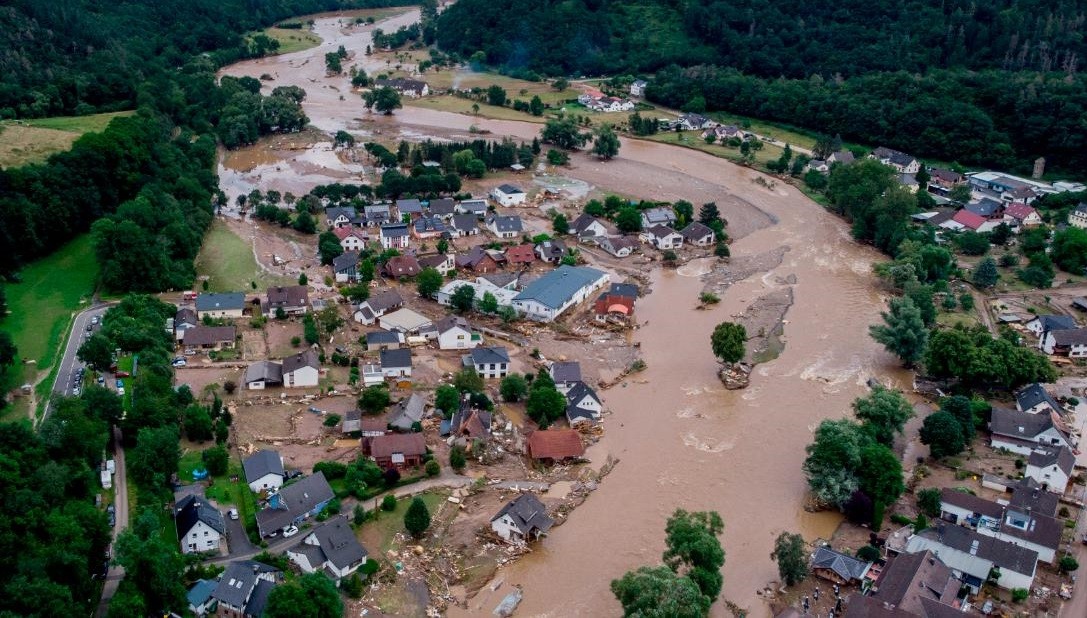We continue to face unprecedented droughts, wildfires, and flooding. All the while, our leaders and media pundits continue to spout contradictions that reinforce confusion. It isn't easy to know where to turn and predict how our future will look - either in terms of environmental disasters or how society will deal with them.
Nevertheless, there is light and some reasoned thinking at the end of the tunnel of fear and panic. Our militaries and the global insurance industry, the world's largest and most powerful sectors, have the most to lose from climate change and are usually left holding the bag after a disaster. Despite this, they've been ignored in the climate debate and discussion of what the future may look like beyond 2030. This article reveals how they see the world, what they predict, and why we should be listening to them.
Written by: Saul Boyle, Tom Bosschaert, Mark Ratcliff

Losing the signal amongst the noise
Our media and social landscape are awash with scattered opinions, lies, and mistruths - finding unbiased and trustworthy information is hard enough to come by, let alone recognize.
On the one hand, doomsday reports declare we only have a few more years till the apocalypse is upon us. This reporting style is characterized by overly-simplistic language and focuses on temperature and sea-level rise measurements.
There's an almost endless emergence of projects, initiatives, and social enterprises that promise that it's their solutions that will avert this impending collapse. Each organization spins its own story in a bid to outshine others and convince the audience that they are our saviors and the sole tellers of truth.
On the other hand, many politicians and those supporting the status quo seek to downplay concerns to prevent alarm or emphasize power and control. Science and research institutes are often accused of exaggerating and manipulating data to increase their funding. Likewise, journalists also continue to face difficulties in the face of collapsing business models and an overly-opinionized media landscape.
Trying to forecast how economics and society will behave is near impossible and the current void of uncertainty and bias has muddied the waters even further. It's difficult enough to imagine anything about our present let alone our future.
The military and insurance industries have the most at stake and can't afford to play games. They are more pragmatic and realistic in how they view the world and offer great insight into how humanity will adapt.

What militaries and the insurance sector predict
It's not always easy to find, but accurate and neutral modeling to predict the most probable socio-economic and political impacts are in the public domain and available for all to see.
Firstly, the world's militaries, particularly the largest, have a host of reports available analyzing and projecting future outcomes. Many are risk assessments focused on current geopolitical weaknesses and crisis points that climate change will only expose and exaggerate. Militaries must plan for this and disregard any grandstanding that too many others in the debate prioritize.
Secondly, predictions and assessments of the global insurance industry are built from the need for managing liabilities and preventing losses. In either case, overvaluing or undervaluing their expenses after the fact will destroy their business model and their sustainability.
Even though they approach from different perspectives, these two groups inherently serve pragmatic needs. Neither engages in the social and political debate on if man-made climate change is real or not, and neither is seeking to gain support, validation, or votes from anyone.
Most importantly, neither group joins in the chorus of souls offering overly-optimistic suggestions about preventing climate change. Both industries work on the assumption that it won't be stopped and accept its inevitability, the reality we will face, and the real risks that will manifest.
These industries talk more about the impact on economics, the domestic and border security of nations, and the expectations for how insurance works and the increased financial risk.

The future state of our climate
Sober predictions from the military and insurance world came about after seeing how society reacted to changes in climate. The observations go back to the early 1990s, but a similar pattern is predicted to shape our future and gives insight into what life may be like towards 2050.
Very few insiders or academics worth their weight in salt would be bold enough to suggest they know exactly how the world and how our climate will be like so far into the future. However, there is consensus that we won't be experiencing any dramatic shifts - our world will not suddenly flip upside down. Significant changes may happen but only in a series of small and incremental steps - much like the ones we are currently experiencing today.
The U.S. Department of Defense in 2019 said that "it is relevant to point out that [the] future... means only 20 years" time and that "projected changes will likely be more pronounced at the mid-century mark." 1 They also reveal that nothing unseen will happen - we are currently dealing with the impacts of climate change as they have already begun to spread across regions.
Both the military and insurance sectors agree that a slow increase in the frequency of extreme weather events and the compounding effect on others will be the norm. Looking even closer into our future, as a primary insurance industry report on climate change bluntly states: "due to slow, gradual change, the climate state of 2030 will not differ significantly from today." 2 In other words, with the passing of another decade, the extreme weather events will be similar to what we are seeing now - yet slightly increased in volatility and occurrence. The insurance industry is gambling an inconceivably large amount on this outcome but has determined it will work in their favor.
While never offering definitive or Nostradamus-style predictions and pointing to a specific date, the military and insurance industries can conceptualize and build a relatively clear understanding and predict what societal changes will happen.
We will all be in it together - it will not only be the undeveloped and poorer countries that many wrongly assume. As the impacts from climate change intensify across all regions, we may become a species based on recovering from previous disasters while preparing for the next.3

Food supply, rising costs and political insecurity
The impacts of climate change are vast and currently unseen by many. However, a place where everyone will be able to witness it is the rising cost in food prices and supply chains - a long-term and upward trend for some time already.4
Droughts contribute to this and as they become more common, so does desertification. We see this already in cases like the Colorado River, where changing weather patterns have reduced annual flow, threatening the sustainability of many large cities and farmlands in the driest parts of the U.S. and Mexico.5
A failed harvest has more profound and persistent side effects than simply a lack of food. It threatens farms' economic viability and the survival of entire regions. This outcome will see a rise in claims by both individual and corporate farms to mitigate losses, and as risks become more significant, growth in claims and rise in insurance premiums.
The Department of Agriculture in the U.S. has mitigated the damage from increased claim-related costs by capping the amount paid by insurance companies. Anything beyond that, and most insurance companies get funding via brokers and banks.
However, the financing of these subsidy schemes comes directly from the U.S. Government's tax revenue, which utilizes brokers as middlemen.6 This band-aid solution has already cost U.S. taxpayers approximately US$65 billion between 2000-2016 and will continue to add to future costs and economic woes.
Despite difficulties, wealthier and more developed nations will have a much better chance to sustain their economies. As environmental stability and the adaptability of farmers in poorer countries decrease, the need to constantly reassess their economic sustainability increases - despite the need for local action, we also need to look at the viability of such financial programs from a global and political perspective.

The credibility of a nation-state, at least in part, lies in its ability to provide reliable and affordable food to its citizens. Climate change threatens to increase and compound the effects of any current food shortages, which will inherently increase prices and threaten a community's autonomy.
When prices for groceries increase to unacceptable levels, the most natural outcome is for citizens to become upset and complain. The next step, if possible, would be to vote in someone new who promises to address the issue. But when democracy is weak and elections fail to bring the correct change, food insecurity acts as a psychological and emotional accelerant, often stoking a relatively minor issue to become much worse.
The Arab Spring in the early 2010s was a prime example of this. What began in Algeria as a single protest for democratic reform against a backdrop of food and water insecurity across the entire Middle East. Shortly after the initial demonstration, a dozen other nations erupted in protest and riots, the side-effects we still see in countries like Libya and Syria.7
In the same region, the U.S. military acknowledged that "a severe drought in Syria from 2009 to 2012 negatively impacted the agriculture industry, stoking unrest that led the nation into its ongoing civil war." 8
When looking to the future, the most pressing climate change-related issue in 2050, from national security and militarized point of view, will be increased geopolitical volatility, likely exacerbated by food insecurity and other associated matters.

Our seas will continue to rise
The insurance and military accept that sea level will rise and produce sustained and costly impacts. The United States Naval College at Annapolis is a well-documented and poignant example of how this will happen.
The U.S. Department of Defense conducted a series of studies about projected flooding rates at the college site. They concluded that the academy "is expecting the sea level to rise between 0.6 and 3.6 feet by 2050, putting most of the campus at risk of flooding. The academy will be faced with the tough decision of either mitigating the risk by investing a significant amount of money to install pumps and barriers or by abandoning parts of the campus altogether." 9
This base is just one of the 70 within the U.S. that will be similarly affected within the same time frame. The DoD focused purely upon the impact upon their bases only. While military bases rarely exist in residential areas, we can expect a similar effect on other civilian areas.
The starkest aspect to the DoD's assessment is the socially pragmatic assessment, despite being written by a body focused on geopolitical risk assessment. They own a lot of lands, and to quote them: "The DoD's global property holdings are worth nearly $1.2 trillion. As the frequency of extreme weather events has increased, the DoD must consider the related risks and make wise investment decisions to mitigate the impacts of extreme weather on the DoD's mission." 10
If the owner of a US$1.2 trillion property portfolio begins talking about abandoning their sea-front properties, as they are unviable for the next twenty to thirty years, how can any other landowner not do the same?
Insurance premiums in these affected places have already begun to increase, more extreme weather events will follow, and the cycle will repeat. It will become increasingly difficult and expensive to live in coastal areas. Hence, it will affect any region's economic and environmental sustainability.
Wealthier nations will have better chances of constructing more extensive flood defenses. However, the increase in government spending may lead to complaints from other regions about why they should fund such protection.
Despite defense systems, sudden surges from large storms will still have dramatic and devastating effects on populations in areas that cannot predict or prepare for them. A prime example of such an event was when Hurricane Katrina hit New Orleans and the subsequent departure of over 100,000 people leaving the region with most yet to return.11
The need to pay for the construction and maintenance of protecting such places will only add to the difficulties of flood-prone regions. The Bank of England's insurance industry watchdog revealed that Lloyd's of London estimated that "20cm of sea-level rise since the 1950s increased Superstorm Sandy's (2012) surge losses by 30% in New York alone." 12
The military and insurance industry acknowledge that rising sea levels are inevitable, along with widespread flooding and erosion. However, both suggest this won't happen suddenly and will likely be seen as a more gradual increase in relatively small events. We will recover, despite how inconvenient and disruptive.

Increased displacement of peoples
The displacement of people caused by political stress, either triggered or made worse by climate change, is a harsh reality of modern times. Nowhere is it more evident than on the southern U.S. border.
In July 2021, the Centre for Climate and Security said that the number of refugees from El Salvador, Guatemala, and Honduras has increased each year consistently since 2012. A majority of them "come from Central America's Dry Corridor (CADC)... where extreme climatic events like prolonged droughts, coffee rust outbreak, and climate-induced disasters have seriously exacerbated social, economic, environmental and political vulnerabilities."13
These crises are expected to become more widespread as we move forward and more extreme climate-related events spread to different regions. In addition to international pressures, individual nations will also see significant population shifts within their borders, increasing challenges to those militaries, many of whom will be forced to deploy assets and help where existing infrastructure fails.
It should be noted that large movements of people are never solely due to climate change alone. Instead, it is usually combined with political, economic, and other social pressures, often resulting from extreme weather events and changes. The subject of refugees is emotive and takes up much political capital. Hence, it raises the crucial question of how we will respond to widespread displacement.

Entrenched economic woes
Working out how climate change affects us now is difficult enough, let alone being able to predict what it will be like in another thirty years. Nevertheless, there are indicators that help to gain a more profound overview of the insurance industries’ concerns.
The economic predictions for the 2030-2050 period are grim. A recent U.S. government report revealed that "the impacts of climate change beyond our borders are expected to increasingly affect our trade and economy... [and] cause substantial net damage to the U.S. economy throughout this century. Annual losses in some economic sectors are projected to reach hundreds of billions of dollars... more than the current gross domestic product (GDP) of many U.S. states."14
A British insurance report mimicked this stark prognosis by stating how the "2011 Thai floods caused US$45 billion of economic damage, which resulted in US$12 billion of insurance payments including claims arising from second-order effects such as supply chain interruption of global manufacturing firms."15
The insurance industry doesn't just ensure physical objects like buildings and stock. It has been insuring derivatives and other investments for years. It's their assessment of future risk management in the economic sector and how they identify the upcoming risk that is perhaps the most crucial insight into the needs of the future.
Climate change is affecting the global financial structure, and The Geneva Report revealed in 2019 how our world is shifting from a valuation perspective to a more systemic and sustainable approach. It showed that "investors are beginning to account for the effects that transitioning to lower-carbon economies may have on the long-term earning potential of carbon-intensive sectors." Also, there is an increasingly common tendency for investors to "consider the impact of climate change when making investment acquisition and disposition decisions."16
In other words, carbon-intensive business is becoming a much greater risk, and investors are beginning to take note. Sustainable and more systemic investing that takes on the inevitability of economic disruption and seeks more long-term solutions becomes about more than just ethics and has the potential to become profitable.
Even fossil-fuel-heavy industries such as automotive, manufacturing, and air travel are beginning to move away from a purely profit-driven ideology and to a more rational one that assesses all possible risks involved in doing business as usual. This change is a significant and positive step.

Our dystopian present
This article summarizes the work done and forecasts made by risk management and security experts. At first, one may think it suggests a rather grim and uncomfortable world, whereby 2050, the impacts of climate change carry our civilization from crisis to crisis. Political demagoguery, food insecurity, higher prices, and shortages will be commonplace for all.
It suggests a world of increasing economic volatility. The only constant will be the environmental crises and streams of refugees who we'll be too busy dealing with than to care about climate change.
It sounds dystopian, but it's worth considering - could it also be an accurate description of the world as it is now?
There is one crucial example: let's consider July 2021.
During this one month alone, our world witnessed record heat blooms over the Pacific Northwest, killing over 500 people in British Columbia.17 At the same time, record heatwaves were experienced in both Scandinavia and New Zealand. 18 19 The sad reality is that excessive heat has killed over 5 million people since 2000 and will continue to do so.20
During the same July, we also saw unprecedented flooding and damage in Europe and China.21 22 It was estimated all worldwide flooding impacted up to two billion people.23
Had we, in 1991, said that in thirty years, events of this scale and disruption would be witnessed in just one month, people would have dismissed it as a dystopian and exaggerated view. And yet, this is not the case today.

We have successfully normalized the encroachment of climate change and extreme weather events over the last 30 years. While the entire world recognizes the dangers, we still don't see a coming together of nations in cooperation.
Instead, we see widespread complacency and an acceptance of these events. In reality, most of these weather events are localized and don't affect most. Those who live through disastrous events continue to exist and cope with whatever life brings us.
What was once unseen and horrific has become the norm. There's no evidence to suggest that as we approach 2050, and as these events happen more often, we will respond any differently.
The world described in the reports from our militaries and insurance industries work upon these simple unspoken axioms. However, the nations where these industries work will continue doing what they do; although perhaps a little differently. Our world will gradually experience another new normal where, sadly, the world's less fortunate will be the most impacted. While relatively undisturbed, the rest of the world is likely to become accustomed and perhaps numb to the new realities.
A source for hope
Based on this assessment, one may easily conclude there is little we can do to avoid the disaster to come, right?
Nothing could be further from the truth. Making projections like this, paying close attention to stakeholders and their future assessments, is invaluable for those seeking pragmatic and practical solutions.
We can't avoid the effects of climate change, but we can shape our response. We can prevent errors and inaction by developing sustainable policy and behavioral changes now that will help us face the next century's inevitable climate realities.
Until we invent time travel, these predictions remain the closest to empirical data. Recognizing this and respecting parameters offers the most practical and effective way to plan and shape our future.
To hear about new articles like this, subscribe to Except Integrated Sustainability's newsletter or follow us on LinkedIn.
Jan. 19, 2022





